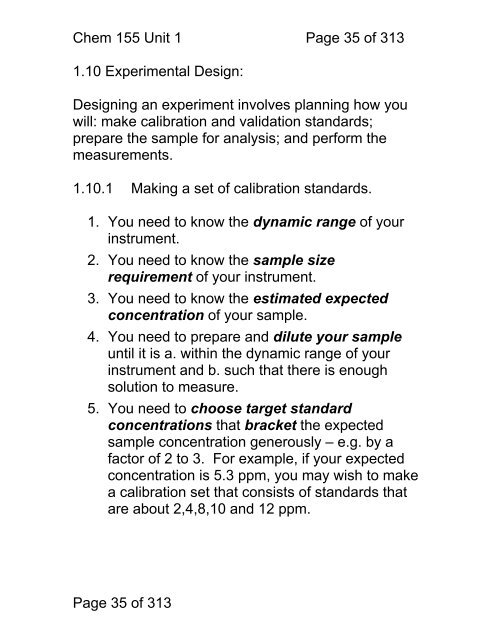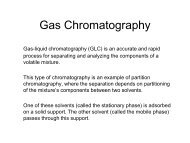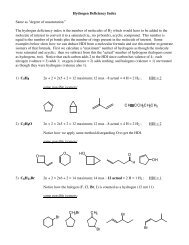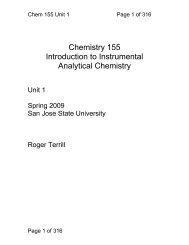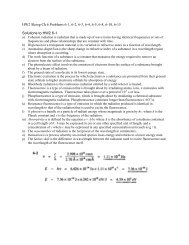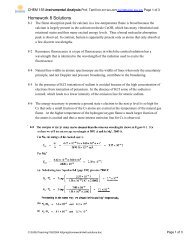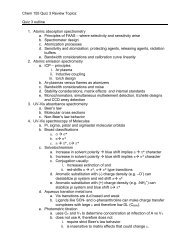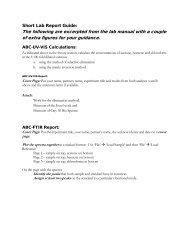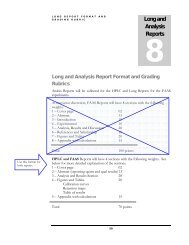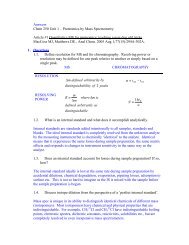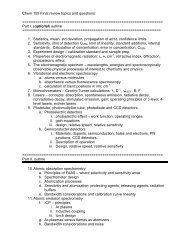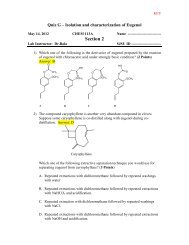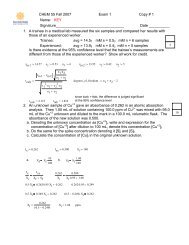Chemistry 155 Introduction to Instrumental Analytical Chemistry
Chemistry 155 Introduction to Instrumental Analytical Chemistry
Chemistry 155 Introduction to Instrumental Analytical Chemistry
Create successful ePaper yourself
Turn your PDF publications into a flip-book with our unique Google optimized e-Paper software.
Chem <strong>155</strong> Unit 1 Page 35 of 3131.10 Experimental Design:Designing an experiment involves planning how youwill: make calibration and validation standards;prepare the sample for analysis; and perform themeasurements.1.10.1 Making a set of calibration standards.1. You need <strong>to</strong> know the dynamic range of yourinstrument.2. You need <strong>to</strong> know the sample sizerequirement of your instrument.3. You need <strong>to</strong> know the estimated expectedconcentration of your sample.4. You need <strong>to</strong> prepare and dilute your sampleuntil it is a. within the dynamic range of yourinstrument and b. such that there is enoughsolution <strong>to</strong> measure.5. You need <strong>to</strong> choose target standardconcentrations that bracket the expectedsample concentration generously – e.g. by afac<strong>to</strong>r of 2 <strong>to</strong> 3. For example, if your expectedconcentration is 5.3 ppm, you may wish <strong>to</strong> makea calibration set that consists of standards thatare about 2,4,8,10 and 12 ppm.Page 35 of 313


